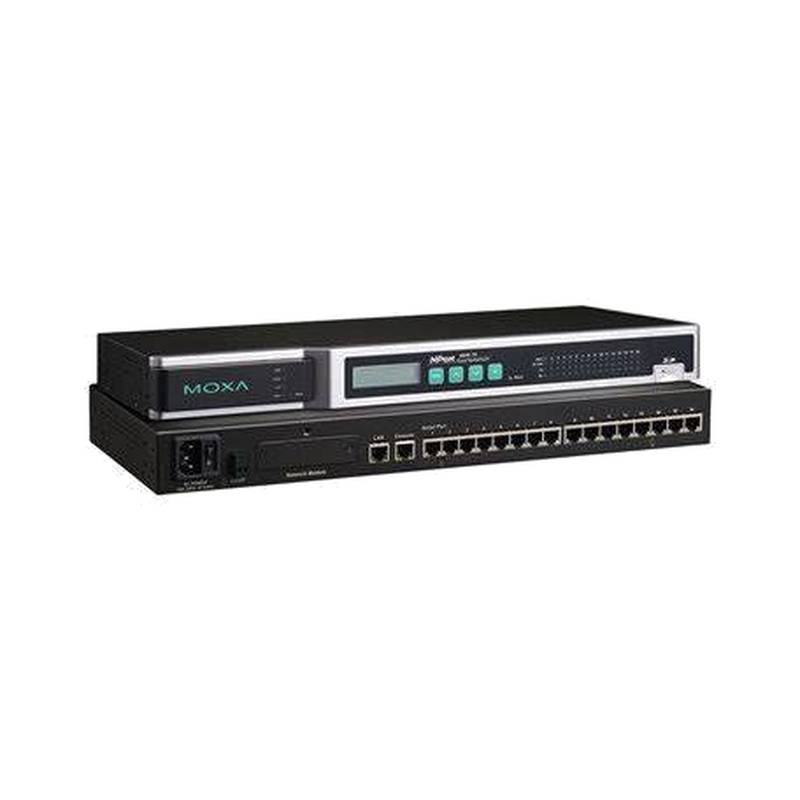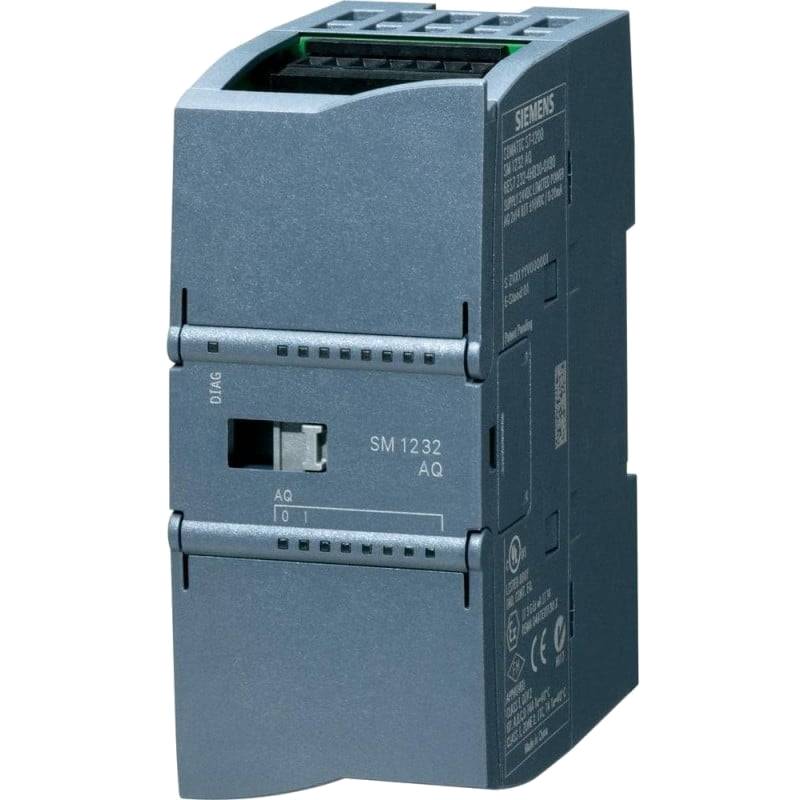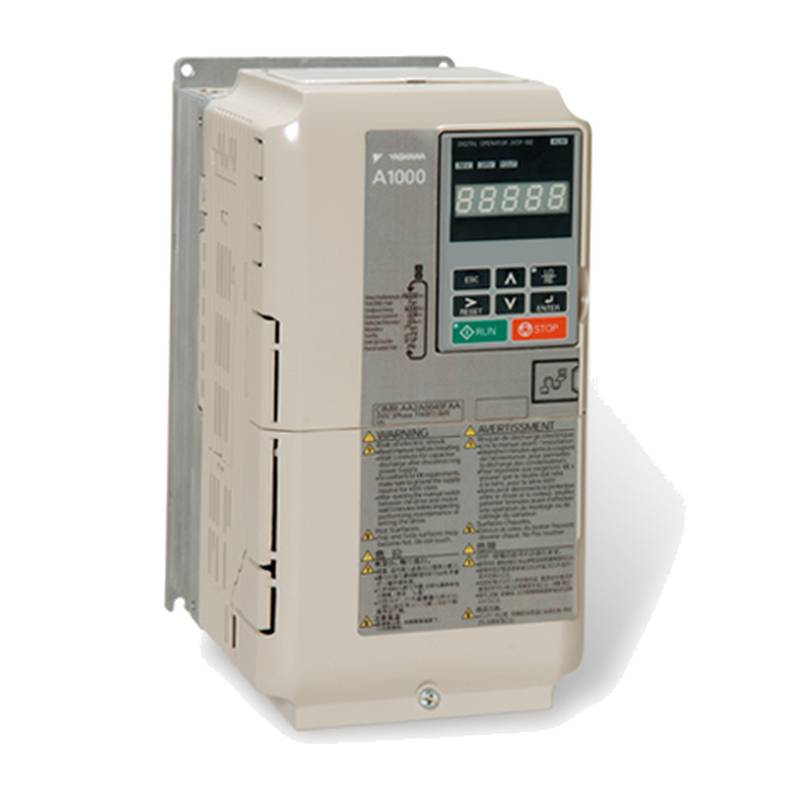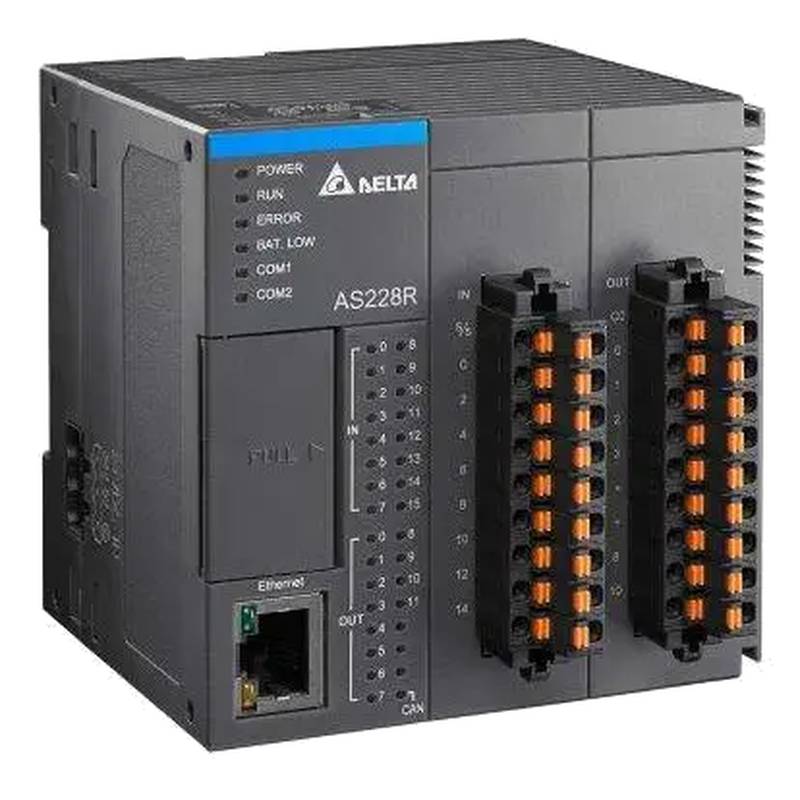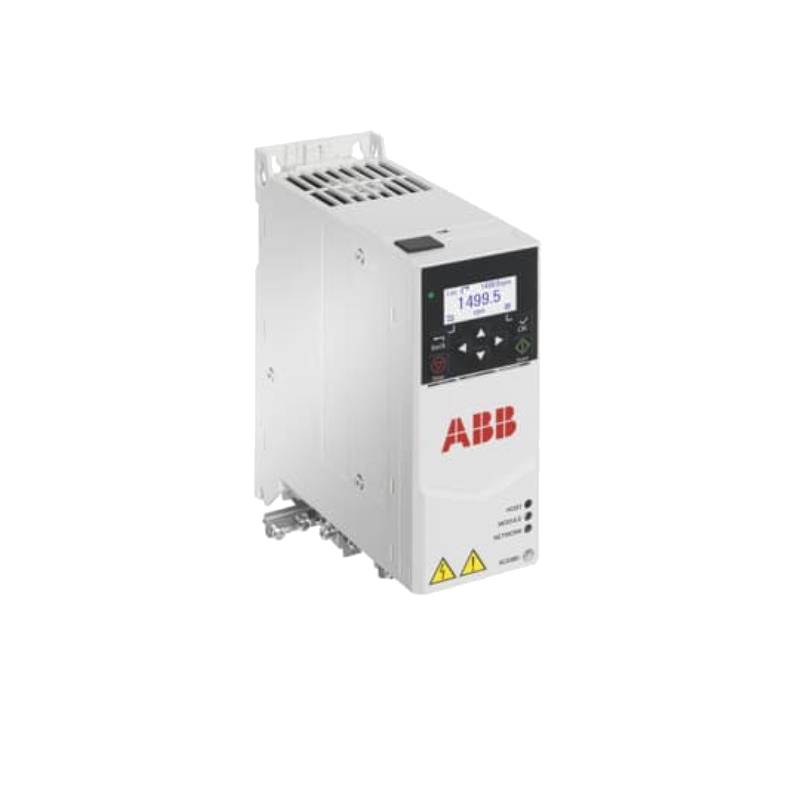
The Moxa NPort 6650-16 stands as a robust 16-port rackmount serial server, engineered to bridge the gap between legacy serial devices and modern industrial networks. Its key advantages lie in its high port density, comprehensive protocol support, and industrial-grade reliability, making it an indispensable solution for critical infrastructure and automation environments. The core features include 16 RS-232/422/485 serial ports, dual Ethernet ports for redundancy, a secure web-based management interface, and support for TCP/IP and UDP protocols. Technically, it operates with a data transfer rate of up to 921.6 kbps per port and features a wide operating temperature range of -40 to 75°C, ensuring performance in demanding conditions.
Product Specifications
| Feature | Specification |
| :---------------------- | :------------------------------------------ |
| Serial Ports | 16 x RS-232/422/485 |
| Ethernet Ports | 2 x 10/100BaseT(X) RJ45 |
| Serial Console Port | 1 x RS-232 RJ45 |
| Baud Rate | 50 bps to 921.6 kbps |
| Data Bits | 5, 6, 7, 8 |
| Parity | None, Even, Odd, Space, Mark |
| Stop Bits | 1, 1.5, 2 |
| Flow Control | None, XON/XOFF, RTS/CTS |
| IP Protocols | TCP/IP, UDP/IP, HTTP, DHCP, BOOTP, Telnet, |
| | DNS, SNMPv1/v2c, IPv4, ARP, ICMP |
| Management | Web Console, Telnet Console, Serial Console, |
| | Moxa ProView |
| Security Features | SSL/TLS encryption, IP Filtering, Port |
| | Security |
| Power Input | 100-240 VAC, 50/60 Hz |
| Power Consumption | Max. 40 W |
| Operating Temperature | -40 to 75°C (-40 to 167°F) |
| Dimensions | 443 x 44 x 300 mm (17.44 x 1.73 x 11.81 in) |
| Weight | 3.6 kg (7.94 lb) |
Core Features & Market Positioning
The Moxa NPort 6650-16 distinguishes itself through its unparalleled serial port density in a standard 1U rackmount form factor, a critical advantage for facilities with extensive legacy equipment. Its dual Ethernet ports not only offer network redundancy through protocols like Moxa's own Turbo Ring or standard STP, but also enable seamless integration into existing network infrastructures without compromising operational continuity. The device's robust security features, including SSL/TLS encryption and IP filtering, are paramount in today's cybersecurity-conscious industrial environments, protecting sensitive data transmission from unauthorized access. This combination of high density, network flexibility, and advanced security positions the NPort 6650-16 as a premium choice for industrial automation, SCADA systems, and any application requiring reliable and secure serial-to-Ethernet conversion for numerous devices.
Key Application Scenarios
The Moxa NPort 6650-16 is ideally suited for centralized control and monitoring in industrial automation, particularly within manufacturing plants where numerous PLCs, sensors, and actuators communicate via serial interfaces. In utility sectors, such as power generation and water treatment, it facilitates the secure remote access and management of critical infrastructure components, ensuring operational efficiency and rapid response to potential issues. Furthermore, its rackmount design makes it a perfect fit for telecommunication equipment rooms and data centers, enabling the management of networking devices, servers, and other serial-dependent hardware through a unified Ethernet network. Its ability to handle diverse serial protocols and high data throughput is also beneficial for complex building automation systems, aggregating data from HVAC, security, and lighting controls.
Practical System Integration Guidance
Integrating the Moxa NPort 6650-16 into an existing network is streamlined through its intuitive web-based management interface, accessible via any standard web browser. Initial setup involves connecting the NPort to the network via its dual Ethernet ports and assigning it an IP address, typically through DHCP or a static configuration. For connecting serial devices, users must select the appropriate serial interface (RS-232, RS-422, or RS-485) and configure the serial parameters (baud rate, data bits, parity, stop bits, flow control) to match those of the connected device. The NPort 6650-16 supports various operating modes, including TCP server, TCP client, and UDP, allowing for flexible communication strategies. For multi-drop RS-485 communication, users can leverage the device's built-in support for Modbus TCP or configure it as a Modbus serial master/slave gateway, simplifying integration with SCADA systems.
Operation and Risk Mitigation
Operating the Moxa NPort 6650-16 effectively involves regular monitoring of its status via the web interface or SNMP. Common troubleshooting steps for serial communication issues include verifying the physical wiring, ensuring correct serial port configuration on both the NPort and the connected device, and checking network connectivity. For network redundancy, configuring the dual Ethernet ports with a failover protocol like STP or Moxa's Turbo Ring is crucial to prevent communication disruptions in case of a link failure. To mitigate security risks, it is advisable to implement strong passwords, restrict access via IP filtering, and utilize SSL/TLS encryption for sensitive data transmissions. Firmware updates should be applied periodically to address any potential vulnerabilities and to benefit from performance enhancements.
Scalability & Long-Term Value
The Moxa NPort 6650-16 offers significant scalability due to its high port density, allowing organizations to connect a large number of serial devices to their IP network without requiring multiple smaller converters. Its compatibility with a wide range of industrial serial protocols and its support for various TCP/IP and UDP communication modes ensure that it can integrate with diverse existing and future automation platforms. As industries move towards Industry 4.0 and the Industrial Internet of Things (IIoT), the NPort 6650-16 serves as a critical gateway, enabling legacy serial devices to participate in networked operations, collect data for analysis, and be managed remotely. Moxa's commitment to ongoing software development and backward compatibility further enhances the long-term value of this serial server, ensuring its relevance in evolving industrial landscapes.
Frequently Asked Questions
What is the primary function of the Moxa NPort 6650-16?
The Moxa NPort 6650-16 acts as a serial server, converting data between serial interfaces (RS-232/422/485) and Ethernet networks. This allows older serial devices to communicate over modern IP-based systems. It is designed for industrial environments and high-density applications.
This serial server provides a bridge for legacy equipment, enabling seamless integration into industrial Ethernet networks. It supports multiple serial port types and high baud rates for efficient data transfer. Its robust design ensures reliable operation in challenging conditions, making it essential for modernizing industrial infrastructure.
The core purpose is to extend the reach of serial devices by making them accessible via TCP/IP or UDP protocols. This facilitates remote monitoring, control, and data acquisition from previously isolated equipment, crucial for automation and IIoT initiatives.
How do I configure the serial port settings on the Moxa NPort 6650-16?
Serial port configuration is done via the web-based management interface. You will need to select the correct serial port and then specify parameters like baud rate, data bits, parity, stop bits, and flow control. These settings must precisely match the requirements of the connected serial device.
The user interface provides dropdown menus and input fields for each serial parameter, ensuring accurate setup. It is crucial to consult the documentation of the serial device being connected to determine the correct settings. Incorrect configurations will result in communication errors and failed data exchange.
For RS-485 multi-drop configurations, additional settings related to addressing or bus termination might be necessary. Always ensure that the NPort's serial settings align with the master or slave device it is communicating with for successful network operation.
Can the Moxa NPort 6650-16 connect to both RS-232 and RS-485 devices simultaneously?
Yes, the NPort 6650-16 supports all three major serial interfaces: RS-232, RS-422, and RS-485. Each of the 16 ports can be independently configured to operate in any of these modes. This offers maximum flexibility when connecting a diverse range of serial equipment.
This capability means you can have some ports set for RS-232 communication with devices like console servers or specific terminals, while others are configured for RS-422 or RS-485 for longer distances or multi-drop communication with PLCs or industrial sensors. The software allows for per-port selection of the interface type.
When planning your integration, identify the serial interface type required by each device. The NPort 6650-16's versatility ensures it can accommodate these varying needs within a single rackmount unit, simplifying network design and deployment.
What network redundancy options are available for the Moxa NPort 6650-16?
The NPort 6650-16 features dual Ethernet ports that support various redundancy protocols. These include standard Spanning Tree Protocol (STP) and Rapid Spanning Tree Protocol (RSTP), as well as Moxa's proprietary Turbo Ring and Turbo Chain technologies for rapid network failover.
These redundancy mechanisms ensure that if one network connection fails, communication can quickly reroute through the other port without significant interruption. This is critical for industrial applications where network uptime is paramount for continuous operation and data integrity.
Selecting the appropriate redundancy protocol depends on your existing network infrastructure and required failover speed. STP/RSTP are industry standards, while Moxa's solutions are optimized for high-speed, deterministic failover within Moxa device networks.
How secure is the Moxa NPort 6650-16 against cyber threats?
The Moxa NPort 6650-16 incorporates several security features to protect against cyber threats. It supports SSL/TLS encryption for secure data transmission over the network, safeguarding sensitive information from interception. IP filtering allows administrators to restrict access to the device based on source IP addresses.
Port security features can further limit unauthorized connections, ensuring that only legitimate devices or users can establish communication. Secure boot and user authentication mechanisms add further layers of defense against unauthorized access and tampering. These features are vital for protecting industrial control systems.
Regularly updating the device's firmware to the latest version is also essential, as updates often include patches for newly discovered vulnerabilities and enhance overall security posture. Implementing strong, unique passwords for management access is a fundamental security practice.
What is the maximum baud rate supported by the serial ports?
The Moxa NPort 6650-16 supports a maximum baud rate of 921.6 kbps on all of its RS-232/422/485 serial ports. This high data transfer capability ensures efficient communication, even for devices that require rapid data exchange.
This speed is sufficient for many industrial protocols and applications that demand fast data throughput. It allows for quick transmission of sensor readings, control commands, and status updates, contributing to the overall responsiveness of the automation system.
When configuring the serial ports, it is important to set the baud rate to match that of the connected device. While 921.6 kbps is the maximum, operating at lower speeds is also fully supported and common for many serial devices.
Does the Moxa NPort 6650-16 support Modbus TCP?
Yes, the Moxa NPort 6650-16 fully supports Modbus TCP. It can act as a Modbus TCP server, allowing SCADA systems or other IP-based applications to communicate with connected Modbus serial devices. It can also function as a Modbus serial master when interfacing with Modbus RTU/ASCII slaves.
This functionality enables the NPort to seamlessly bridge Modbus serial communication protocols to the Modbus TCP/IP standard. This is a common requirement in industrial automation for integrating a wide range of PLCs, drives, and other equipment that use the Modbus protocol.
By converting Modbus serial to Modbus TCP, the NPort 6650-16 simplifies network architecture, allowing for easier data collection, remote monitoring, and control of devices across an Ethernet network without needing specialized serial cards on the supervisory computers.
What power input does the Moxa NPort 6650-16 require?
The Moxa NPort 6650-16 is designed for universal power input, accepting a wide voltage range of 100-240 VAC at 50/60 Hz. This makes it suitable for deployment in various regions worldwide without the need for voltage converters, simplifying international installations.
The device also features robust power protection, though external surge protection is recommended for highly critical installations in harsh power environments. Its power consumption is relatively low, typically maxing out at around 40W, which is efficient for its high port density.
Ensure that the power source is stable and meets the specified voltage range for optimal performance and longevity. The unit comes with standard power cords suitable for typical industrial rack installations.
What is the operating temperature range for this serial server?
The Moxa NPort 6650-16 is built for extreme environments, featuring a wide operating temperature range of -40 to 75°C (-40 to 167°F). This ensures reliable performance even in harsh industrial settings, such as unconditioned enclosures or outdoor cabinets.
This broad temperature tolerance is critical for industrial automation, oil and gas, and utility applications where ambient temperatures can fluctuate significantly. It eliminates the need for climate-controlled environments for the serial server itself.
When deploying in environments near the extreme ends of this range, ensure adequate ventilation to prevent localized heat buildup, especially when operating at maximum load. The rugged design contributes to its suitability for continuous operation in challenging conditions.
How is the Moxa NPort 6650-16 managed and configured?
Management and configuration of the NPort 6650-16 are primarily handled through its user-friendly web-based management interface. This allows for easy access and setup from any standard web browser on the network.
Additionally, it supports management via Telnet and a dedicated serial console port for initial setup or troubleshooting when network access is unavailable. Moxa also offers its ProView software suite for centralized monitoring and management of multiple Moxa devices.
Configuration involves setting network parameters, serial port settings, operating modes (TCP server, client, UDP), and security options. The interface is designed for intuitive navigation, making it accessible even for users with moderate networking experience.














